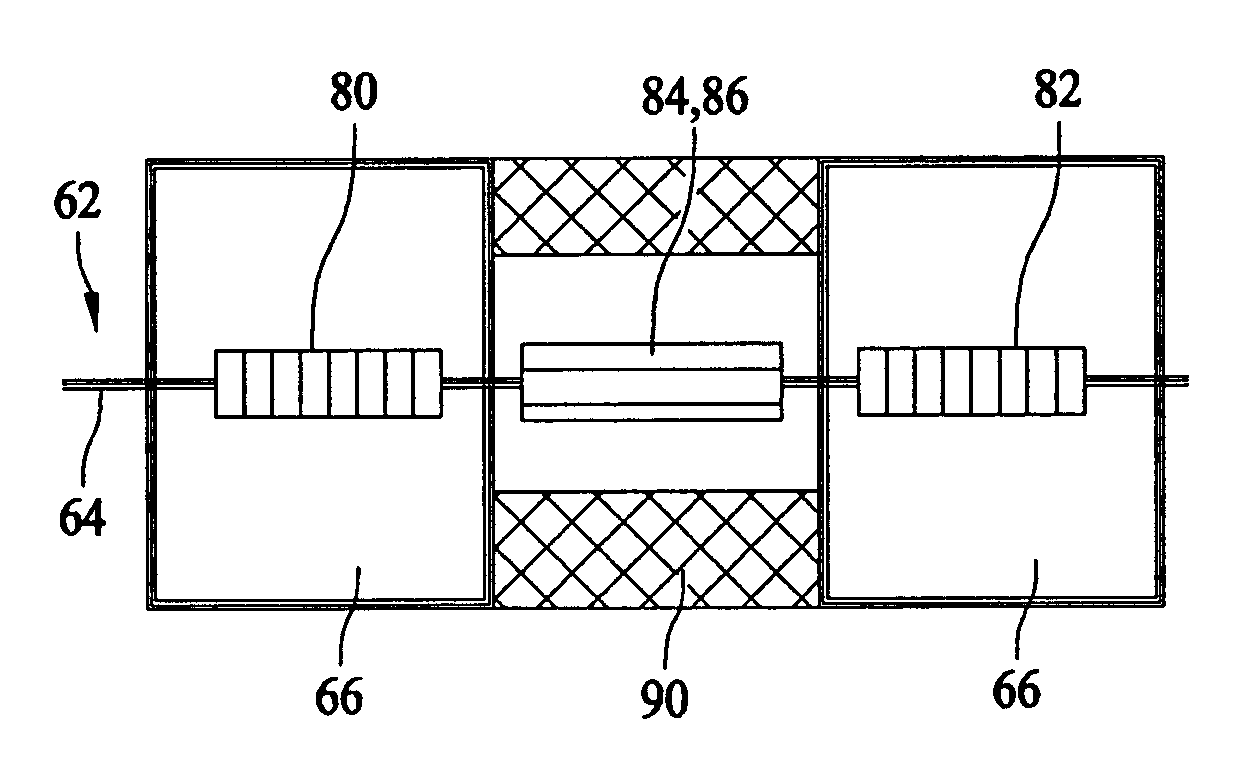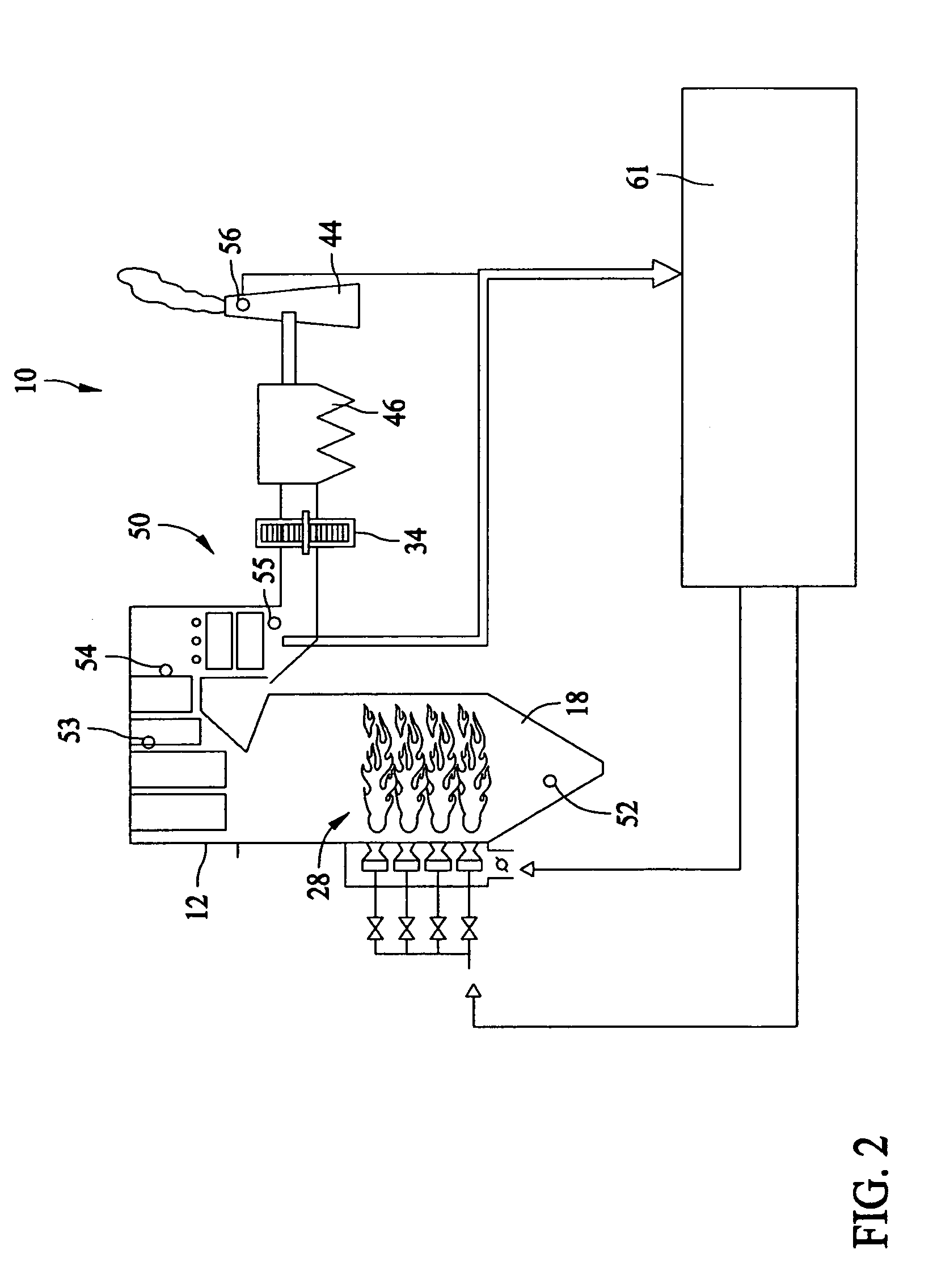Method, system and module for monitoring a power generating system
a power generating system and monitoring system technology, applied in the field of power generating systems, can solve the problems of low peak steam/power generation, poor or non-uniform combustion, and low availability
- Summary
- Abstract
- Description
- Claims
- Application Information
AI Technical Summary
Benefits of technology
Problems solved by technology
Method used
Image
Examples
Embodiment Construction
[0022]The present invention provides a sensing method and system for monitoring operating conditions and / parameters of a power generating system, such as, without limitation, a fossil fuel fired boiler, a gas turbine and a steam turbine. As an exemplary embodiment, the invention will be described in the context of a boiler system. The sensing method and system detect the presence of gases and / or the concentration of the gases produced a combustion process within the boiler furnace, as well as other operating conditions and / or parameters including, without limitation, temperature, heat flux and / or pressure. The sensing method and system includes an array of sensing modules each positioned at a spatial location within the power generating system to monitor operating conditions and / or parameters, such as combustion conditions that include emissions, temperature and / or pressure. The sensing method and system also includes using the detected information to make adjustments to boiler syst...
PUM
 Login to View More
Login to View More Abstract
Description
Claims
Application Information
 Login to View More
Login to View More - R&D
- Intellectual Property
- Life Sciences
- Materials
- Tech Scout
- Unparalleled Data Quality
- Higher Quality Content
- 60% Fewer Hallucinations
Browse by: Latest US Patents, China's latest patents, Technical Efficacy Thesaurus, Application Domain, Technology Topic, Popular Technical Reports.
© 2025 PatSnap. All rights reserved.Legal|Privacy policy|Modern Slavery Act Transparency Statement|Sitemap|About US| Contact US: help@patsnap.com



